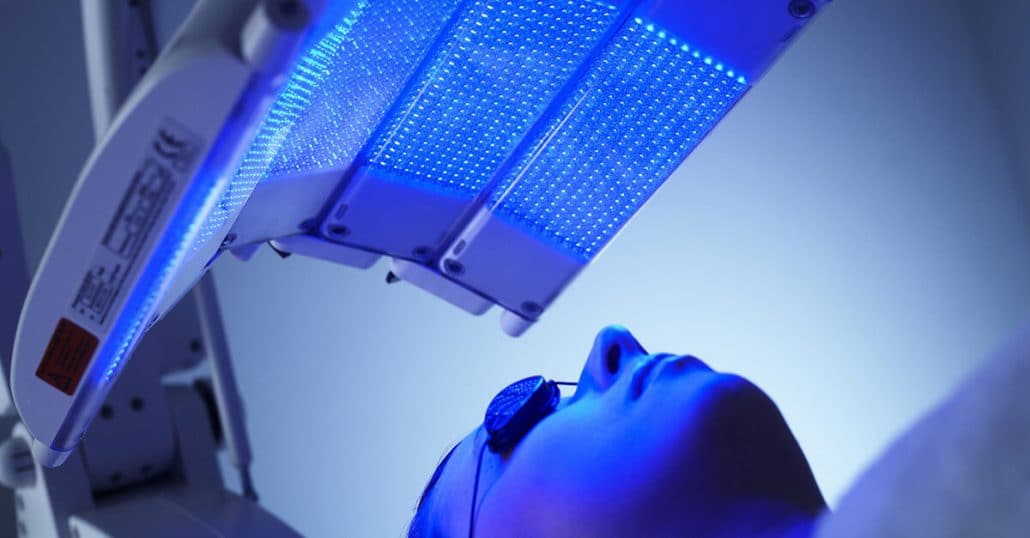Making Waves
You’ve likely seen them, images in ads showing a futuristic beam of blue light being shot onto a patient’s still face like some odd, alien technology right out of some science fiction movie. It’s not uncommon to see blue light therapy in ads for skin doctors or even in infomercials selling home blue light kits. In recent years, photodynamic therapy technology has become increasingly popular, especially among patients suffering from acne. It’s a safe and rather stress-free alternative to treating acne over most prescription meds for this skin condition.
HOW DOES BLUE LIGHT THERAPY WORK?
So, how does blue light therapy work? Well, acne is caused by bacteria known as Propionibacterium acnes, which is sensitive to blue light. When exposed to this light, bacteria in our skin’s oil glands die, which causes the glands to shrink. When the bacteria and oil are gone from the skin, the result is less inflammation from acne; when the blemishes disappear from the skin, it begins to regenerate and appear normal. This process is most effective when used on inflammatory acne (also known as red pimples) and often takes several sessions of treatment to be effective.
Using both red and blue light therapy is especially useful on chronic acne sufferers that have endured acne issues into adulthood. It is a painless procedure and one that Utah Valley Dermatology is proud to offer using Omnilux® technology. Each Omnilux® treatment series is usually applied in eight sessions over a period of four weeks and the results often last up to six months and even longer after the second and third periodical treatments.
OTHER SKIN CONDITIONS TREATED WITH BLUE LIGHT THERAPY
Now, acne is the most common condition that is treated with red and blue light therapy, but it is not the only condition it has proved effective against. In photodynamic therapy, dermatologists have discovered a new tool in the fight against skin cancer, specifically in skin cancer patients with actinic keratoses. Actinic, or solar keratoses, are the rough, scaly lesions found on the face and scalp of fair-skinned people who have endured long-term sun damage.
Actinic keratoses have been traditionally treated using cryotherapy, in which the lesions are freeze-dried with liquid nitrogen. Photodynamic therapy is now being used to treat cases of this ailment by first applying a light-sensitizing chemical on the skin which will activate once it is exposed to the blue light. The chemical becomes active by reacting to a specific wavelength in blue light, creating what is known as oxygen radicals that attack the lesions and cancerous skin. The treatment has proven up to 14% more effective than cryotherapy when treating actinic keratoses, with some lesions disappearing completely in as short as three months.
Although the full extent of its effectiveness for treating this type of cancerous lesion is still under investigation, it is seeing more and more use as it turns out to be a less invasive and discomforting procedure over other alternatives such as cryotherapy or topical chemotherapy. This, however, does not come with its downsides. Photodynamic therapy can prove to be time-consuming and costly for some patients. It may also not be suitable for every patient as it has shown that some people present different reactions to the treatment. There are also post-procedural measures that need to be observed by the patient such as carefully protecting themselves from the sun after receiving the treatment, as photodynamic therapy leaves the patient’s skin overly sensitive to sunlight.
As you can see Photodynamic red and blue light therapy is proving to be a great alternative for the treatment of both acne and actinic keratoses and may be suitable for you as well. As is necessary with all medical procedures, consulting with your doctor about your specific case is the best way to find out if this treatment is right for you. While home-applied blue light devices are available and safe to use, it is best to first have a doctor assess your case before attempting any self-treatment.



